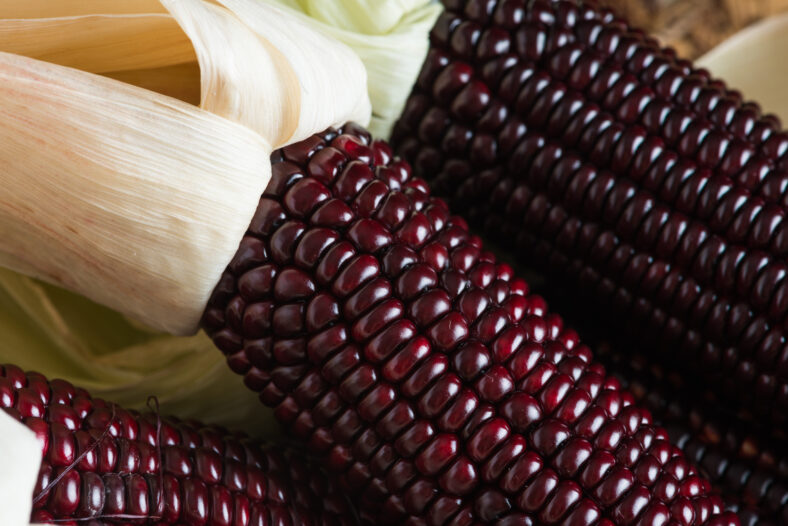Purple Corn Could Help Prevent Obesity, Diabetes, Cancer, And Inflammation

When it comes to corn, Americans just can’t get enough of it. Whether it’s a buttery movie snack or fresh off the cob at barbecues, it’s a national favorite. But did you know this staple grain can be more than a simple starch?
Corn, specifically purple corn, is a superfood loaded with antioxidants and anti-inflammatory compounds. It could potentially help prevent obesity, diabetes, inflammation, and cancer.
Researchers from the University of Missouri have been analyzing dozens of different varieties of corn. They compared the health benefits of red, blue, and purple maize to traditional yellow dent corn.
“We’re identifying the best varieties and providing feedback she uses to decide which varieties to breed for the next cycle,” said Pavel Somavat, an author of the study and an assistant professor at the university.
“We’re looking at the makeup of the corn and how it responds to Midwestern climates, as well as how we can add value to the corn by developing new uses for it.”
Maiz Morado, a dark purple corn found in South America, seems to be the healthiest variety so far. The outer layers of the corn’s kernels contain more antioxidants than blueberries, in addition to flavonoids, phenolic acids, tannins, and other beneficial compounds.
They can be easily removed and used for other applications in the food industry, making the crop all the more valuable.
However, Maiz Morado currently does not grow well in Missouri’s climate. The researchers have had to cross Maiz Morado with yellow corn throughout the project in order to create pure breeding lines.
The pure breeding lines will then be crossed together to create hybrids that produce full-sized purple ears of corn. More work will need to be done to make sure the corn yield is high enough to generate a profit.

Sign up for Chip Chick’s newsletter and get stories like this delivered to your inbox.
According to Somavat, Missouri is already a leading corn producer in the United States, and there is potential to expand purple corn production into new markets, providing farmers with new opportunities to diversify their income.
It’s true that consumers might need some time to get used to the idea of eating purple corn, but there are other ways to incorporate it into our food supply. For instance, purple corn extracts could be used as a food dye.
The extracts could take the place of Red Dye 40, which is a petroleum-based synthetic dye found in many foods, such as sweets, dairy products, and beverages.
Although the Food and Drug Administration has determined that Red Dye 40 is safe for human consumption, studies have shown that Red Dye 40 has links to allergic reactions, migraines, and even attention- deficit/hyperactivity disorder (ADHD).
Recently, the state of California passed a law banning red and other synthetic dyes from meals and drinks that are served in public schools. Replacing synthetic dyes with natural extracts from colored corn could make food products safer and more nutritious.
“The potential of non-yellow corn goes far beyond food,” said Somovat. “With its unique health benefits and other applications, it offers a more sustainable, high-value alternative for farmers and consumers alike. This is allowing us to rethink the role of corn in our future.”
The study was published in the journal Industrial Crops and Products.
More About:News